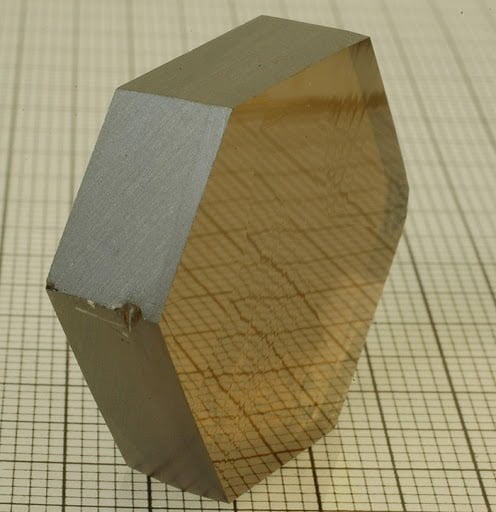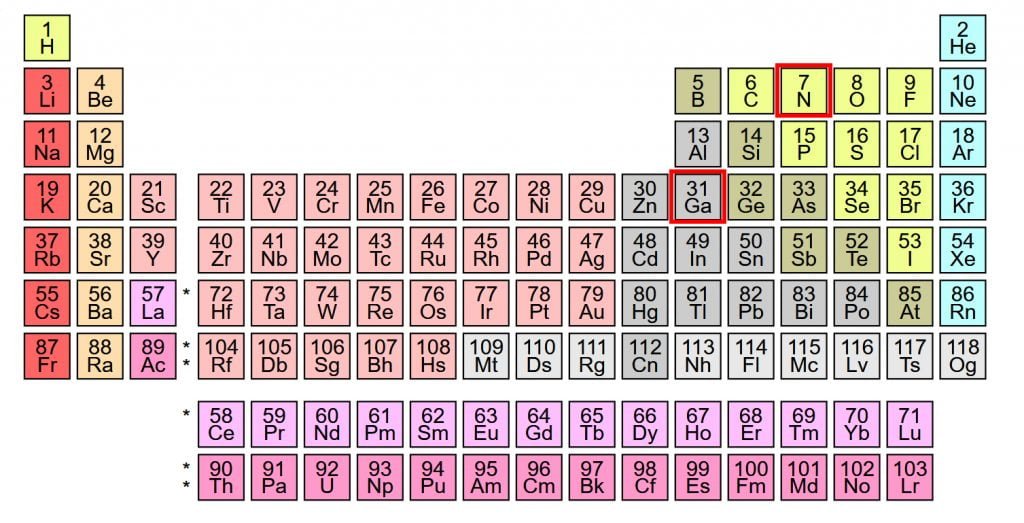Behind a new generation of smaller, but more powerful charger...

Is Gallium Nitride
It will be the reason why you don’t have to carry brick-like chargers anymore…
To be frank, silicon is why chargers are so big, thanks to its electrical and heat properties (or limit). Over the past decades, manufacturers have been laboring themselves over improving silicon-based transistors.
Consider this observation made in 1965:
“The number of transistors in a dense integrated circuit doubles about every two years” - Gordon Moore, co-founder of Fairchild Semiconductor and of Intel.
This observation was largely true until 2010, when the growth began to slow down noticeably.
To put things into perspective, all chargers that you have ever used since the first one until now — are all silicon-based … Apple, Samsung, Google, and all other 3rd party’s.
So when Gallium Nitride chargers become a thing recently, their popularity skyrocketed on Indiegogo and Kickstarter.
What is a Gallium Nitride?
Gallium Nitride (GaN) is a semiconductor, a material with conductivity value between a conductor and an insulator. Much like Silicon, the main element of components that run in all electronics from smartphones to microwave ovens.
Where did Gallium Nitride come from?
Gallium was discovered back in 1875 in Paris (which is 51 years after silicon) and had become a member of the periodic table since. But it wasn’t until the 1940s that Gallium Nitride was first synthesized.
And it looks like this:

(Source: About GaN)
Trivia: Gallium is not a naturally-occurring mineral on earth. Instead, it is often found in trace amount inside zinc and bauxite
For the curious souls, here are Gallium (Ga) and Nitride (N) on the periodic table:

Gallium Nitride vs Silicon
To start, it has a wider band gap (3.4 eV). Silicon’s band gap is 1.1 eV. With that, Gallium Nitride can withstand higher voltages and conducts current much faster.
For conducting current, Gallium Nitride’s efficiency is 1000x better than silicon.
Next, GaN device can withstand higher temperatures. Its heat limit is 600 °C while silicon’s is 150 °C. That opens up Gallium Nitride for more flexible applications while also making it attractive for the aerospace and military industry.
There are MORE:
Gallium Nitride can operate under higher frequency, making it also ideal for frequency-based applications. Which are electronics that deal with changing voltages, like radios and the chargers you power your laptops and smartphones with.
And the cherry on the cake? GaN-based chips can be made significantly smaller than its silicon counterpart.
Here are their differences summed up:
What does that mean?
Gallium Nitride is the Future of Chargers
All that makes it the perfect successor to silicon. Charger manufacturers love it.
A wider band gap means it can pump out higher voltages (or power), to charge your devices faster; and let the current pass through easier, so less energy is lost while charging.
In comparison, a GaN charger runs at 95% efficiency, while a silicon-based charger runs at 87% efficiency.
The result?
You need fewer components.
And it also generates significantly less heat because of minimal energy loss. So your charger manufacturers can do away with the bulky heat sink silicon-based chargers need.

Heat sink helps the heat flow away from components that generate heat.
On average, your charger can be 40% smaller.
Imagine the weight and space that are freed up from your bag.
On that efficiency note, one 65W GaN charger that powers your laptop will also have extra energy to charge a second device simulatenously, say, your smartphone.
In fact, it is estimated that we could cut global consumer energy usage by 10 – 20% if we replace all silicon with Gallium Nitride.
And with Power Delivery (PD), which charges up to 100W, leading the trend now — Gallium Nitride has become the perfect substitute.
Wrapping up, here are the advantages of GaN chargers:
- 40% smaller in size. No heatsink and fewer components
- Doesn’t heat up as much as silicon-based chargers
- Charge faster OR charge multiple devices at once
- 95% power efficiency & conserves energy
- One charger can potentially charge every device
Which begs the question:
If GaN Chargers are so good …
Why isn't GaN Charger More Popular?
They thought Gallium Nitride was bad
Gallium Nitride was jam packed with defects. Silicon crystal has typically 100 defects per square centimeter. No one had managed to grow GaN crystals with…
fewer than 1 billion defects per square centimeter.
That is the absolute opposite of what you want to make efficient electronics.
Consequently, the research for Gallium Nitride was left far behind because there was less incentive to fund them.
Luckily, all that changed in 1993. The year Gallium Nitride revolutionized the lighting industry when Shuji Nakamura invented the blue LED (the prerequisite for white LED) with GaN-based semiconductor.
Since then, the studies on growing GaN crystals have doubled down. And more and more promising methods of producing them with less defects are becoming available.
In the meantime…
Silicon has long dominated the electronics market
Having done so for decades, most existing infrastructures are tailored for silicon-based products.
Although in the past few years, manufacturers have begun picking up efforts to lower the cost of producing GaN devices.
Good news is — it’s working!
Manufacturers have figured out how to produce GaN chips with existing procedures for silicon. Plus, with Gallium Nitride’s smaller size and independence from supporting components — the production cost, time, and resources all can be reduced.
In a nutshell
Gallium Nitride has come a long way since…
From a compound largely thought to be useless … To the next breakthrough in the technological industry.
And from revolutionizing the indoor lighting we depend on to now — transforming the electronics that we rarely go a day without using.
So when is the great time to get your own GaN chargers?
Though GaN chargers haven’t yet been made common by the giants in the industry, they are very much available now.









